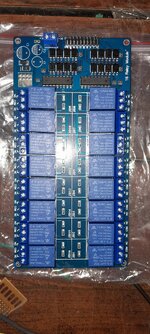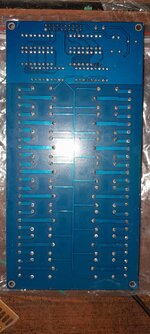AboudaKing
Member level 1
hello.
i have recently bought a 16 relay module from Aliexpress, i tried to test it now but it's not powering on, and i just have noticed it's not similar to the ones i seen before, looks like its missing few parts 'not soldered'
i have googled it and seen other modules same as mine
does the module without those pieces supposed to work 'considering they are selling it this way multiple places'
if not what are the reference to those parts so i can fix it
thank you


i have recently bought a 16 relay module from Aliexpress, i tried to test it now but it's not powering on, and i just have noticed it's not similar to the ones i seen before, looks like its missing few parts 'not soldered'
i have googled it and seen other modules same as mine
does the module without those pieces supposed to work 'considering they are selling it this way multiple places'
if not what are the reference to those parts so i can fix it
thank you

